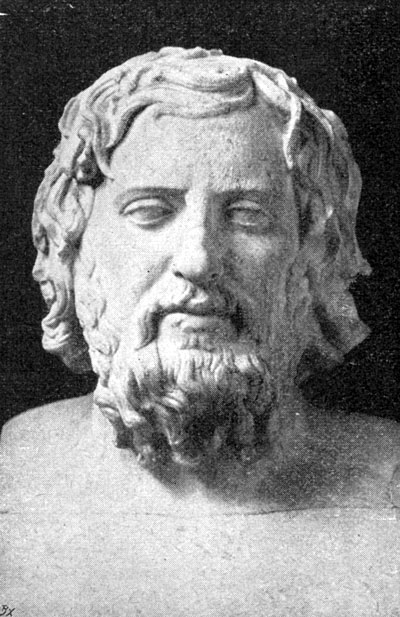Xenophon
 mini|Xenophon
mini|Sokrates (rechts) und möglicherweise Xenophon (links). Detail aus der ''[[Die Schule von Athen|Schule von Athen'' von Raffael, 1510–1511]]
mini|Xenophon
mini|Sokrates (rechts) und möglicherweise Xenophon (links). Detail aus der ''[[Die Schule von Athen|Schule von Athen'' von Raffael, 1510–1511]]Xenophon (; * zwischen 430 und 425 v. Chr. in Athen; † ca. 354 v. Chr. in Korinth) war ein antiker griechischer Politiker, Feldherr und Schriftsteller in den Bereichen Geschichte, Ökonomie und Philosophie. Er war ein Schüler des Sokrates. Veröffentlicht in Wikipedia
-
1
-
2
-
3von Xenophon
Veröffentlicht 1914London : New York : W. Heinemann ; Macmillan, 1914.2 v. ; 17 cm.Also issued online. -
4
-
5von Xenophon
Veröffentlicht 1734Hamburg, bey Konig und Richter, 1734.10 p. l., 195 p. front. 20 cm. -
6von Xenophon
Veröffentlicht 1613A Cologny : Par Pierre Aubert ..., M. DC. XIII. [1613][8], 777, [17] p. -
7
-
8
-
9
-
10
-
11von Xenophon
Veröffentlicht 1914London, New York, J. M. Dent & sons, ltd.; E. P. Dutton & co. [1914]xv, 305 p. 17 cm. -
12von Xenophon
Veröffentlicht 1942Bruxelles, Office de publicité, 1942.88, [2] p., incl. front. (port.) 20 cm. -
13
-
14
-
15von Xenophon
Veröffentlicht 1893Boston, Little, Brown, and company, 1893.viii p., 1 l., [13]-187 p. front., illus., plates. 19 cm.Also available in digital form on the Internet Archive Web site. -
16von Xenophon
Veröffentlicht 1914London, New York, J.M. Dent & Sons; E.P. Dutton & Co. [1914]1 online resource (xv, 305 pages)Center for Research Libraries
Online Zugang -
17
-
18
-
19
-
20Baltimore : Penguin Books, 1949.309 p. : map ; 22 cm.

